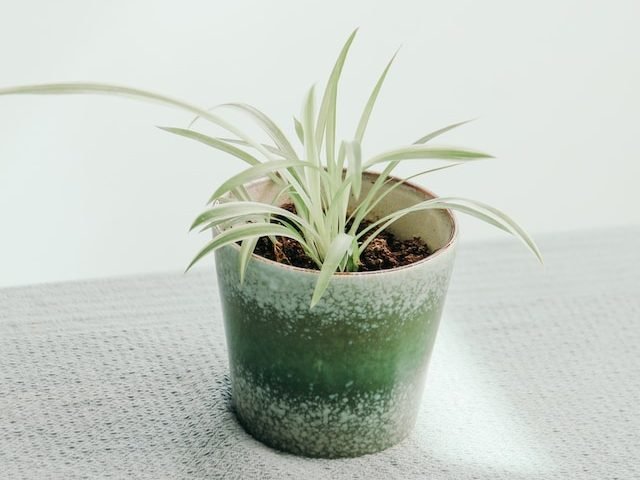
Although African Milk Trees look like cacti, they are actually technically classed as succulents which is important to remember during the process. Propagating them is pretty simple and can be done with small or large plants. You just need to be a little careful when handling the plants as they can be a little sharp and their sap is toxic to touch.
In this post we will guide you through the complete process; the various methods you can use, the dos and don’ts, what tools you’ll need and things to look out for to ensure everything goes smoothly.
Why propagate an African Milk Tree?
There are several reasons why plant parents choose to propagate their luscious plants. Sometimes they can simply get too big for the space and not grow in the way we want them to. Regularly pruning cutting off stems or the tops of stems helps to control growth. But instead of just throwing away those beautiful stem cuttings, use them to create new plants!!
Another reason is if part of your plant is starting to look quite unhealthy. This might be yellow leaves, brown leaves or if your African Milk tree is suddenly losing some of its leaves. We always recommend trying to diagnose the problem and try to fix it, but if there is no sign of change you might choose to remove a healthy part of the plant before it’s too late. It’s crucial that you only propagate the healthy stems as you won’t have much luck using parts of the plant that are already dying.
You might also want to remove parts of your African Milk Tree simply because you want to create new plants without having to pay for any more. And if you’re home is already filled with plenty of greenery, then plant cuttings can make great gifts for friends and family too.
What tools will I need?
Let’s start off with the easy part. It’s important to make sure you have all the right things to hand before you make that initial cut!
Healthy and mature African Milk Tree
Protective gloves
Sharp scissors/shears
Spare pot
Fresh succulent soil and water
Newspaper or plastic sheet if propagating indoors
What methods can I use to propagate my African Milk Tree?
There’s only really one main method which works for all shapes, sizes and maturity of plant; the stem cutting method. This is where you cut off a part of, or all of one stem and grow it like a new plant. It’s great for any propagation beginners as there aren’t many steps involved.
How to propagate an African Milk Tree through the stem cutting method
Locate your stem cutting
When taking an a stem cutting you want to make sure that the part of the plant you are cutting is healthy to give you any chance of success. You can either take a tip cutting or a full stem cutting. A tip cutting is when you slice part of one of the stems off, whereas a full stem cutting would be cutting where the chosen stem meets the main stem on your African Milk Tree. Either can be just as successful and follow exactly the same process. Try to choose a cutting that is at least 10-15cm long to have the best chance of success.
Make the cut
This is the scary part! Now that you have located the section of the stem that you want to propagate, you need to cut it off! Use clean scissors/ shears or a knife to make the cut to avoid passing on dirt or any infection to the plant. Use your tools to make a clean cut across your plant in a diagonal way. This increases the surface area of the cutting and will encourage more growth.
It is very important that you wear thick gardening gloves at this stage because sap will very quickly leak out from your stem cutting. The sap from African Milk Trees is toxic and causes skin irritation if you come into contact with it.
Stop the sap flowing
To stop the flow of sap out of your fresh cutting, you want to run it under cool water for a minute or two. Make sure only the bottom section of the cutting is getting wet as African Milk Trees are sensitive to leaf rot.
Let the cutting callous over
One thing we can do to stop infections or leaf rot is to let the cutting callous over. Leave the cutting in a warm, dry place for a full week before continuing to the next step.
Plant your cutting into potting mix
With most houseplants, you tend to grow your stem cuttings in water for several weeks to encourage root growth but with African Milk Trees you pot them straight into soil. This is because they are succulents and will simply rot if placed directly in water for long periods of time.
Fill your new pot with fresh succulent potting mix and place your cutting 5 centimetres into the soil. Make sure you use fresh mix as you don’t want to accidentally transfer pests or bacteria between your plants. You also want to make sure you are using a high-quality potting mix with the right nutrient balance as regular potting mix won’t have enough drainage.
Give it a little bit of water
You want to water your new cutting a little to give the potting mix some moisture but be careful not to overwater as this will very quickly kill your cutting.
Be patient!
Care for your African Milk Tree as you would the mother plant and hopefully, after several weeks or months, it’ll grow its own root system and start to grow taller too! Don’t lift your cutting out of its pot too often to check on the roots as this will hinder the process. As long as your cutting is getting the right amount of water and light, everything should be going well!
African Milk Tree Propagation FAQs
Taking cuttings can sometimes be quite daunting and you might not be 100% sure on the right things to do. But don’t worry, we have all of the answers to your questions to make sure that everything goes well.
What’s the best time of year to propagate my African Milk Tree?
Ideally, you want to start in the middle of spring for the best chance at success. You want to be sure that any winter frost is behind you as your new cutting will struggle to grow in really cool temperatures. Starting in mid-Spring means you have several months of warm sunny weather to help encourage root growth.
Propagating in autumn or winter will mean that your cutting will be trying to grow at a time where your plant is usually dormant. So you won’t really see much happening at all and the risk of leaf and root rot is a lot higher due to the cold temperatures.
Is it a good idea to use rooting gel for my African Milk Tree propagation?
Whilst it’s not always required, you can definitely get great results from using rooting hormone to speed on the process a little. Rooting hormone stimulates root growth and produces stronger roots.
Rooting hormone is available in 3 types: powder, liquid or gel. The best type for this kind of propagation is powder as you dip the end of the cutting (including the node) into water and then into the powder before planting directly into fresh potting mix. The moisture helps the powder to stick to the cutting.
Gel and liquid forms work in a similar way but are great when choosing to grow cuttings in water which we don’t need to do for African Milk Trees.
Should I use a grow light for my African Milk Tree cuttings?
You only really need to use a grow light when you are doing this in less than ideal light conditions. But we do recommend plant parents invest in a grow light as they are also great for more mature plants to supplement light levels over winter to stop leggy and stunted growth patterns.
Heat mats are also a great buy for propagation lovers as they create a nice warm environment that helps speed up root growth. Cool temperatures are damaging to young African Milk Trees and can lower your chances of success.
Is it possible to propagate an African Milk Tree from a single leaf?
Unfortunately, you aren’t able to propagate an African Milk Tree from the little leaves that grow off the main stem. The best method is to take a proper stem cutting as this will grow roots.
Can I fertilise my African Milk Tree cutting?
We don’t recommend fertilising your stem cutting until at least one year afterwards. This is because fertilising less mature plants can actually stunt their growth and cause a whole range of other issues.
Common problems when propagating African Milk Trees
This process won’t always be straightforward and it can happen that you run into some problems along the way. But don’t worry, we have you covered. Below you’ll find all of the most common problems as well as how to fix them!
Help, my African Milk Tree cutting isn’t growing any roots?
This process isn’t as quick as some other houseplants as they are relatively slow growers which means a whole new root system and new healthy growth will take a while. It will take many weeks and maybe even a few months for your plant to start growing roots and new stems. Make sure you are watering the right amount and giving the cutting plenty of light).
If you want to try and speed up the process you can use rooting hormone which you can use when you water your cutting which encourages faster root growth but it’s not always a guarantee and comes with risks of its own.
Why is my African Milk Tree cutting turning mushy?
It’s really not a good sign if your cutting has suddenly turned mushy as there is not often a lot you can do to reverse this. Mushy cuttings mean your plant has been overwatered and it has started to rot.
The best thing to do is take the cutting out of the potting mix to assess the damage and see if there is anything that can be saved. If so, trim away the mushy parts (whilst wearing gloves) and restart the process.
Why are the new growth on my African Milk Tree cutting small?
If your cutting is starting to grow new parts of the stem but it’s much smaller than before don’t worry – this is completely normal. It’s due to the root system being less mature than that of the larger plant so it can support leaves any larger.
Why is my African Milk Tree cutting turning yellow?
If the leaves on your cutting are turning yellow then it may be due to too much direct sunlight which has burnt or scorched the leaves. This will show up as patches that look quite sunburnt and dry. If the parts of the plant are also very dry to touch then this is probably the issue.
We have found a lot of success through the stem cutting method so with a little bit of patience you should have plenty of new plants for your home!
Check out our full African Milk Tree care guide for more information on how to care for your cutting once it has matured.















